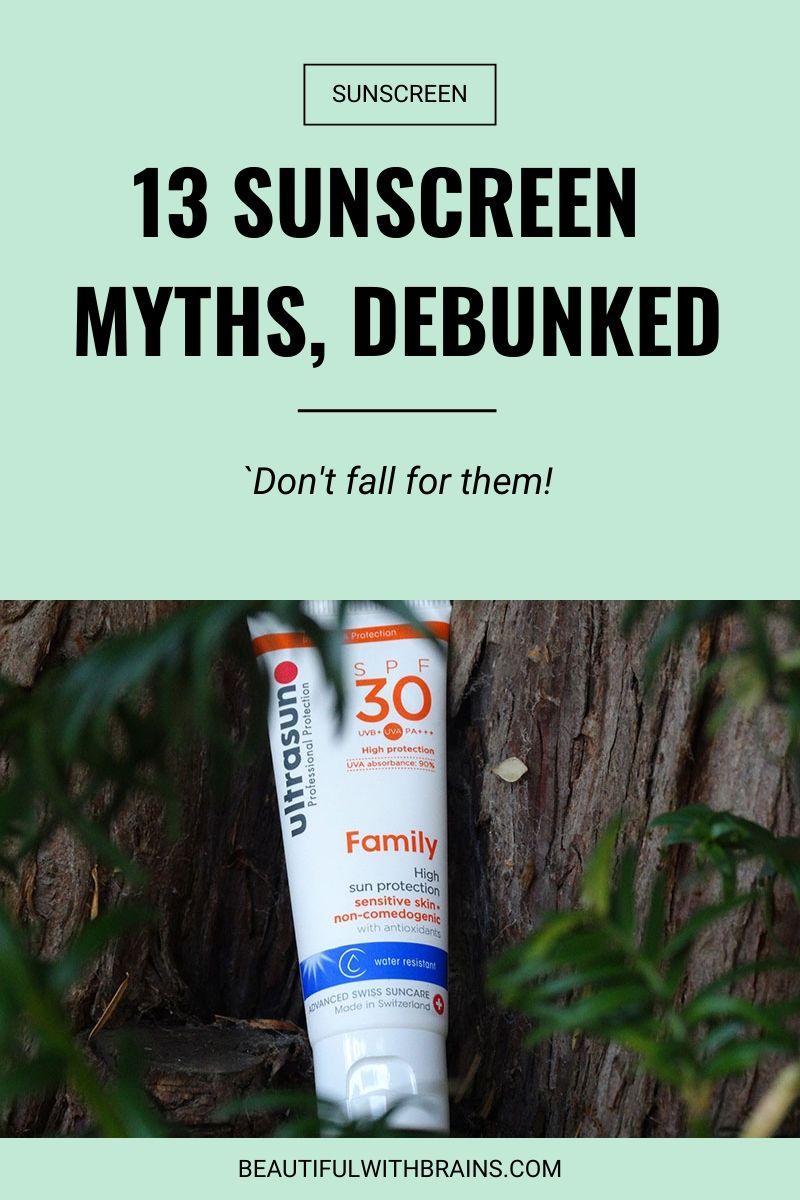
Let’s talk about sunscreen myths and here’s why: how the heck are you supposed to use sunscreen right if everyone has a different opinion about it?! Apply it before you go to the beach. No, you can slather it on once you get there. Use it every day, even if you’re not going to the beach. No wait, you won’t get your vitamin D fix that way. Argh! What’s a girl to do to avoid wrinkles, cancer and all the other crap the sun causes?
Sunscreen is the MOST important product in your skincare arsenal. Using it wrong is NOT an option. But who to believe? Science. I’ve talked to many dermatologists and read hundreds of skincare studies to understand how to get the most out of your sunscreen and here’s what I found out. Here are 13 (yes, there are that many!) common sunscreen myths debunked:
- Sunscreen Myth #1: All Sunscreens Protect From Both UVA And UVB Rays
- Sunscreen Myth #2: Layering Sunscreens Adds SPF
- Sunscreen Myth #3: I Can’t Get A Tan If I Use A High SPF Sunscreen
- Sunscreen Myth #4: Your Old Sunscreen Bottle Is Still Effective
- Sunscreen Myth #5: It’s Enough To Apply Sunscreen Once A Day
- Sunscreen Myth #6: You Don’t Need Sunscreen If It’s Cloudy
- Sunscreen Myth #7: You Don’t Need To Wear Sunscreen If You Spend Most Of Your Day Indoors
- Sunscreen Myth #8: It’s Best To Apply Sunscreen When You Get To The Beach
- Sunscreen Myth #9: If You Wear Sunscreen, You Won’t Get Enough Vitamin D
- Sunscreen Myth #10: If You Have Dark Skin, You Don’t Need Sunscreen
- Sunscreen Myth #11: If You Already Have A “Base Tan” You Don’t Need Sunscreen
- Sunscreen Myth #12: If You Stay In The Shade, You Don’t Need Sunscreen
- Sunscreen Myth #13: Sunscreen Blocks Out All UV Rays
- My Sunscreen Recommendations
- The Bottom Line
Sunscreen Myth #1: All Sunscreens Protect From Both UVA And UVB Rays
You’d think this would be a given. How can you sell a sunscreen that protects only from one type of UV rays? And yet, that’s what happened for years… I admit it’s rare these days, but you can still come across a sunscreen that protects only from UVB rays if you don’t check those labels carefully. How do brands get away with this?
Easy. SPF, or sun protection factor, only measures sunscreen protection from UVB rays. If it blocks 97% of UVB rays, it can be labelled SPF30 even if it offers no protection at all from UVA rays! That’s not good enough. You need protection from BOTH UVA and UVB rays. Here’s what to look out for on the label:
- “Broad spectrum”: Most Western sunscreens use this term to let you know they provide protection from both UVA and UVB rays.
- Plus sign: Asian sunscreens use the PA system. The more + signs next to the PA letters, the more protection from UVA rays the sunscreen provides.
- UVA filters: You can always check the ingredient list to make sure it contains an UVA filter. They are zinc oxide, titanium dioxide, avobenzone, mexoryl, and tinosorb. Just be careful with titanium dioxide. It protects from a lot, but NOT ALL UVA rays, so it must be paired with one of the other UVA filters. If not, leave it on the shelf.
Related: What Does PA On Sunscreen Labels Stands For?
Sunscreen Myth #2: Layering Sunscreens Adds SPF
“Sunscreen layering, contrary to popular belief, is actually not layering multiple sunscreens but layering multiple SPF products, to provide your skin with maximum sun protection,” says dermatologist Dr Manasi Shirolikar. But does it work?
Wouldn’t it be great if you could use a moisturizer with SPF 15, a sunscreen with SPF 50 and a foundation with SPF 20 and get an SPF of 85? Sadly, it doesn’t work out that way. Adding more products with SPF doesn’t increase sun protection. You still only get the protection of the highest SPF you’ve applied. In this case, 50.
You can wear as many products with SPF as you want (heck, if you find a wonderful fountain and it has SPF, don’t throw it away!), as long as you use a high SPF sunscreen with them. Anything else doesn’t work as well as sunscreen. Although, it can help you by extending UV protection. Here’s what I mean. If you accidentally miss a spot on your cheek and you apply a foundation with SPF, that foundation will cover the missed spot area. It won’t be as well protected, but it’s better than nothing.
Related: Sunscreen Math: Can You Add SPF?
Sunscreen Myth #3: I Can’t Get A Tan If I Use A High SPF Sunscreen
First of all, you shouldn’t get a tan anyway. A tan is a sign of sun damage. Period. Besides, you’ll tan even with sunscreen. Truth bomb: no sunscreen blocks 100% of UV rays. SPF30 blocks only 97%. Even SPF100 blocks only 99%.
And that if you apply the required amount (around a glass shot for the whole body) and reapply it every two hours… In real life, that means you’ll still get a tan even if you wear sunscreen. You’ll just develop it way more slowly (and prevent most of the damage it always brings).
May seem unfair but see it like this: are dealing with deep wrinkles and creepy skin in your 40s worth a beautiful tan for? Guess not… Pile on your sunscreen and get your tan from a bottle, ladies.
Related: A Tan Isn’t Worth Dying For
Sunscreen Myth #4: Your Old Sunscreen Bottle Is Still Effective
By old, I mean more than one year old. You know last year’s half used bottle you’ve kept for the upcoming summer. It won’t do. Sunscreens start losing effectiveness after one year. Even sooner than that if you’ve kept them under or near the heat (like in your car). Don’t risk it. Buy a new bottle.
Although… why do you still have last year’s sunscreen bottle? If you use sunscreen every day, rain or shine, that bottle should have run out a long time ago.
Related: Skincare Products Expiration Dates
Sunscreen Myth #5: It’s Enough To Apply Sunscreen Once A Day
Maybe if it’s a really, really, really gloomy day and you’re spending most of it inside. Most days, sunscreen reapplication is a necessary evil. Here’s why: UV filters get deactivated by sunlight. The longer they’re exposed to UV rays, the sooner they lose their effectiveness and leave you unprotected.
Not to mention, you’ll brush sunscreen off your skin when you swim, sweat, dry yourself off with a towel… Half of the sunscreen you’ve put on half an hour ago has already gone. Do your skin a favour and reapply it often.
In the hot summer days, I reapply sunscreen every two to three hours. In winter, when it’s dark by 3pm and I spend most of my days indoors (ah, the joys of living in London), I reapply it once a day. And if you’re wondering how to reapply sunscreen while you’re wearing makeup, I got you covered. Check out this guide on how to reapply sunscreen without messing up your makeup.
Related: Why Do You Need To Reapply Sunscreen Every Two Hours?
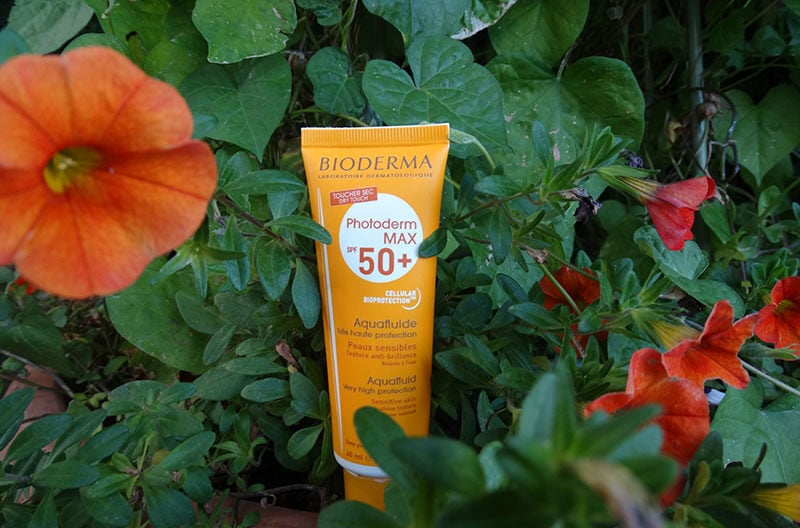
Sunscreen Myth #6: You Don’t Need Sunscreen If It’s Cloudy
Sorry to be the bearer of bad news, but those UVA rays are sneaky. They easily penetrate even through the darkest of clouds and hit your face, causing all sorts of damage. UVA rays are mostly responsible for wrinkles and saggy skin (as well as cancer), so don’t risk it. Just because you can’t see the sun, it doesn’t mean it’s not hurting you. Trust me, you’ll age more slowly and a lot better than all your friends who aren’t wearing sunscreen on cloudy days.
Sunscreen Myth #7: You Don’t Need To Wear Sunscreen If You Spend Most Of Your Day Indoors
It makes sense, does it? If the sun can’t get you inside, why bother with sunscreen? Because the sun CAN get you inside my friend. And it WILL. Here’s the deal. In the past, sunscreens only protected your skin from UVB rays. Those can’t penetrate glass, so if you were inside, you didn’t need to use sunscreen.
UVA rays are another matter entirely. These pesky rays CAN penetrate through glass so if you’re inside, especially if you live or work in a place with big windows, you’re not safe from them.
It doesn’t matter if you’re outside or inside, if you want to keep your skin safe from UV harm, you need to wear your sunscreen from the moment the sun comes up to the moment the sun comes down.
Related: Can UV Rays Penetrate Through Glass?
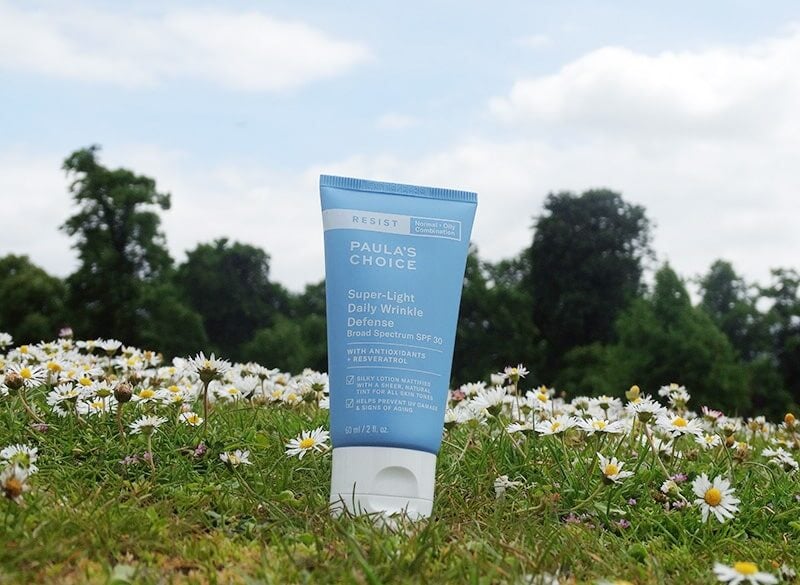
Sunscreen Myth #8: It’s Best To Apply Sunscreen When You Get To The Beach
And what will keep your skin safe while you get there? Hope and prayers? I’ve told ya, UVA rays can penetrate glass. That means car windows, too. Besides, sunscreen should always be applied at least 20 minutes BEFORE you head out the door. That gives it time to form an even shield against UV rays. Don’t fool yourself you’ll only be out for 5 minutes anyway. 5 minutes here and 5 minutes there build up to A LOT of damage!
Related: Why Do You Need To Apply Sunscreen 20 Minutes Before Leaving The House
Sunscreen Myth #9: If You Wear Sunscreen, You Won’t Get Enough Vitamin D
Sunscreen is a must. It keeps you safe from wrinkles, dark spots and cancer. Vitamin D is a must, too. It prevents rickets, keeps your teeth and bone healthy and does plenty more good things for your body.
Few foods have vitamin D. But when you expose your skin to the sun, your body produces vitamin D in spades. Unless you wear sunscreen. That blocks UV rays and, as a result, vitamin D production. BUT, not completely! Even SPF 100 lets 1% of UV rays through (no, a sunscreen that blocks ALL UV rays hasn’t been invented, yet). So, you can still wear sunscreen and get your vitamin D fix. Win win.
It’s not my opinion. This is what a 2012 study says: “A review of available evidence published in 2009, however, concluded that although sunscreens can reduce significantly the cutaneous synthesis of vitamin D under very strictly controlled conditions, their normal use by the general population does not generally result in vitamin D insufficiency.”
P.S. If you have a severe vitamin D deficiency, consult a doctor for supplements. The sun should always be your LAST resort for your vitamin D fix.
Related: How To Get Your Vitamin D Fix Without Giving Up On Sunscreen
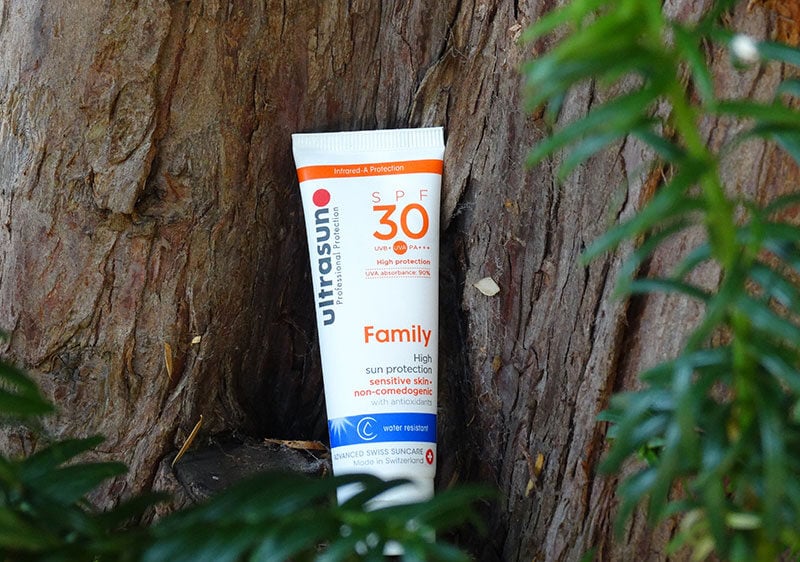
Sunscreen Myth #10: If You Have Dark Skin, You Don’t Need Sunscreen
It’s true dark skin produces more melanin than fair skin. That makes it less likely to burn. BUT, you can still burn. AND you’ll still get wrinkles and dark spots. AND you’re more likely to die from skin cancer than people with a fairer complexion – just because you underestimate the risks.
You see, if you know you’re at risk, you wear sunscreen. But if you think you can do without, you’ll take more risks with the sun. You’ll also be less likely to go for regular screenings for cancer (why go if you think it can’t happen to you?). When you finally realise there’s something wrong, it may already be too late. Don’t gamble with your life. Wear sunscreen every day.
Sunscreen Myth #11: If You Already Have A “Base Tan” You Don’t Need Sunscreen
First things first: there’s no such thing as a healthy tan. A tan, whether it’s from sun exposure or a tanning bed, is a sign that your skin is damaged. Your skin gets darker because it’s trying to defend itself from UV rays – and telling you to get the heck out of there, now. If you keep on tanning, you’re just putting yourself at risk of sun damage and skin cancer. Don’t do it.
But even if you’re already tanned, don’t fool yourself that base tan will give you some adequate sun protection. Your skin is already in trouble. Don’t make it 10x worse. Wear your sunscreen, base tan or no base tan.
Related: A Tan Isn’t Worth Doing For
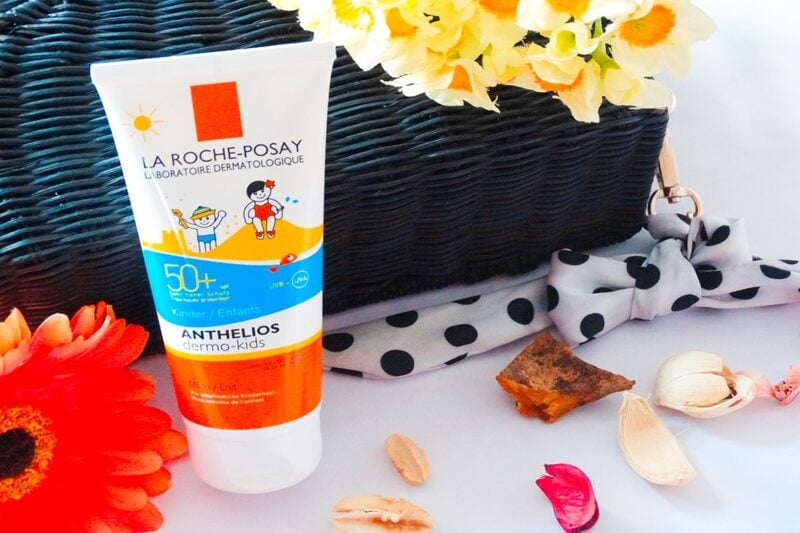
Sunscreen Myth #12: If You Stay In The Shade, You Don’t Need Sunscreen
I totally agree that you should seek the shade whenever possible. Or wear a hat. Or use an umbrella, even. But that doesn’t exonerate you from wearing sunscreen. The harsh truth is that shades don’t completely block all the sun rays. Translation: if you don’t wear sunscreen in the shade, you’re still at risk of sun damage. Ugh.
Sunscreen Myth #13: Sunscreen Blocks Out All UV Rays
If only! No sunscreen, not even those with SPF 100, can block out ALL UV rays. Some sunscreen can block up to 99% but a few sneaky rays still get through. That’s cool. If only a tiny amount of rays get through, you can neutralise them with an antioxidant-rich serum. But you wouldn’t do that if you were convinced your sunscreen is enough, right? Choose one with a high SPF and make sure it offers broad spectrum protection (check for the word “broad-spectrum” on the packaging).
Related: Does SPF 100 Provide You With A False Sense Of Security?
My Sunscreen Recommendations
- Dr Dennis Gross All-Physical Ultimate Defense Broad Spectrum Suncreen SPF 50 PA++++ ($42.00): A zinc oxide sunscreen with soothing agents to protect skin from UV rays and soothe inflammation. Available at Cult Beauty, Dermstore, Nordstrom, Sephora, and SpaceNK.
- EltaMD UV Pure BroadSpectrum SPF 47 ($25.00): A wonderful, lightweight formula for oily skin that provides broad-spectrum protection without leaving a greasy, white mess. Available at Dermstore and Walmart
- La Roche Posay Anthelios Clear Skin Dry Touch Face Sunscreen SPF 60 ($19.99): Ideal for oily skin, this lightweight sunscreen provides broad spectrum protection and absorbs excess oil for a matte finish. Available at Boots, Dermstore, La Roche Posay, and Ulta.
- Murad City Skin Age Defense Broad Spectrum SPF 50 / PA++++ ($69.00): A mineral sunscreen enriched with natural oils, soothing agents, and antioxidants to provide broad-spectrum protection, prevent wrinkles, and soothe inflammation. It rubs in well and isn’t greasy. Available at Cult Beauty, Look Fantastic, Murad, Sephora, SpaceNK and Ulta.
The Bottom Line
There you have it, the truth about common sunscreen myths. Now you know the truth and how to get the most out of your sunscreen, pile it on, every day, rain or shine. It’s the best thing you can ever do for your skin.


Good myth buster tips there, Gio! And I have one for you: don’t put your chemical sunscreen in the car, they chemical will disintegrate very fast because of the heat.
.-= Dao´s last blog ..Rubenesque Paint Pot: Golden Peach Shimmer Goodness! =-.
I say “AYE!” I can’t stop nodding when I read your post! very helpful!!!
.-= Nikki´s last blog ..Nail Art Tutorial: Bling Bling Nails =-.
some great tips!! im on the look out for another sunscreen!
.-= Nicola´s last blog ..Shiseido TM Vs. Laura Mericer TM (Oil Free) (Long post) =-.
oooops! i am guilty of no.6 =/
I always get tan even through a high SPF sunscreen!
Dao: that is a great and useful tip, thank you! 🙂
Nikki: thanks hun, you’re so sweet. I’m glad you found it helpful.
Nicola: thanks! Finding the right sunscreen can be hard. I like physical ones but they can leave a white cast. Hope you find a great one!
prettybeautiful: it’s easy to forget to wear sunscreen if the weather is bad. But you can always use a foundation or sunscreen with SPF, they give some protection too 🙂
Lydia: that’s good 🙂 I wish more people realised that they can get a tan even when protected by a high SPF sunscreen.
Myth #1. I only learned the truth on that recently at my Clinique consultation. But isn’t it that only the top most layer of the SPf counts? For example, moisturiser with SPF 30, foundation with SPF 15 on top of the moisturiser, net SPF would be only 15? I am still a little confused on this. Hope you can help me clarify this. Thanks, gio.
.-= Vonvon´s last blog ..Review: Kiehl’s Grapefruit Liquid Body Cleanser And Exfoliating Body Scrub =-.
Hi Vonvon,
it doesn’t really matter what product is on top, it is the SPF rating that counts. The level of protection you get is that of the product with the highest SPF you used. So if you apply moisturizer with SPF 30 and foundation with SPF 15, the SPF you get is 30. That is because it is the highest SPF product you used.
Hope this was clearer. If you have more questions, just let me know 🙂
But even if you add layers of different products with different SPF isnt it helpful in case all the layers are thin?
This would help even out protection. Let’s say, for example, that you missed a little patch of skin with your SPF 30 sunscreen. If you apply a SPF 25 foundation on that patch, then that would be protected too. In other words, the more layers, the more chances every inch is covered. But every inch still only gets the protection of the higher SPF applied there.
I have a rule: If I can see my hand in front of me without putting a light on, I need sunscreen.
Don’t forget the damage that blue light does, too!
Put a blue light screen on your phone, computer and any other device you look at for a long time and also use skincare that protects against it.
I use Dr. Barbara Sturm’s Anti-Polution serum for this. I reckon products to protect the skin from blue light will be The Next Big Thing.
Lucy, that’s a great rule! I couldn’t agree more. 🙂
…Oh and I forgot to add that Clè CCC Cream is amazing. Broad Spectrum spf45 and calls itself a tinted moisturiser but it’s thicker and more covering than my foundation!
Lucy, what a great find! Thanks for sharing.